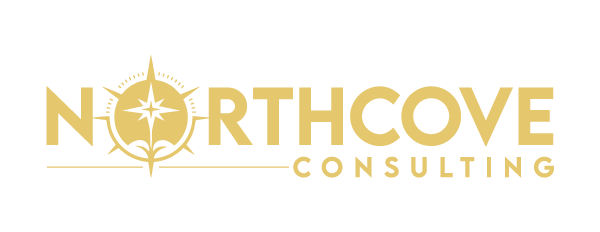
How Employee Engagement Programs Drive Workplace Productivity
Employee engagement programs, when well designed, can be the engine of transformative productivity gains at all levels of an organization. Partnering with a seasoned hr management consulting company ensures your work is aligned with industry best practices and yields a measurable return on investment. From detailed onboarding processes to dynamic recognition systems, these initiatives are designed with transparency, meaningful career growth, and complete well-being in mind, creating a culture where employees can thrive every day.
“Doubling recognition frequency has the potential to increase productivity by 9%, decrease safety accidents by 22%, and decrease absenteeism by 22%. For a company with 10,000 employees, this translates to almost $92 million in productivity gains.” Business Wire
What are Employee Engagement Programs?
At its core, an employee engagement program is a full, formalized effort to create emotional commitment, discretionary effort, and a shared sense of purpose among employees. Instead of viewing engagement as an isolated activity, organizations construct multi‑dimensional systems that encompass:
- Onboarding Journeys: Immersive welcome processes that connect new hires to company values from day one.
- Feedback Loops: Iterative pulse surveys, suggestion programs, and personal check-ins to bring insights to the surface.
- Recognition Mechanisms: Peer recognition shout-outs, milestone parties, and spot bonuses that celebrate successes.
- Career Development: Mentorship programs, skill-building workshops, and open career paths that give employees a future in the company.
- Wellness Support: Mental health resources, fitness challenges, and flexible work arrangements that demonstrate a sincere concern for employee well-being.
By incorporating these aspects into business operations, organizations communicate that the satisfaction and growth of each member are strategic priorities, ultimately being translated into performance, loyalty, and commitment.
The Business Case: Benefits of Employee Engagement Programs
Employee engagement program investments provide a significant return along several dimensions:
Benefit | Description | Impact |
Increased Productivity | Involved employees provide discretionary effort, speeding up timelines and quality. | Up to a 21% increase in profit margins. |
Lower Turnover | Recognition and growth lower voluntary turnover, avoiding recruitment and training expenses. | 40% decrease in turnover rates. |
Enhanced Customer Experience | Valued employees provide outstanding service, enhancing satisfaction and loyalty. | +15 points in Net Promoter Score (NPS). |
Stronger Employer Brand | A reputation for having a people-focused culture attracts top talent and increases employer reputation. | 30% better-qualified candidates for each position. |
Improved Innovation | Enabled teams produce innovative solutions and improve processes. | 25% increase in new product ideas that were submitted. |
Key Employee Engagement Strategies
Creating strong engagement frameworks starts with data‑informed strategies for employee engagement programs designed for your employees. Starting points include:
-
Pulse Surveys & Analytics
Send regular, quick polls to gauge sentiment and capture issues before they escalate.
-
Focus Groups & Interviews
Conduct small-group interviews to achieve rich qualitative feedback on employee hopes, wishes, and frustration hotspots.
-
Leadership Enablement
Equip managers with active listening, coaching, and inclusive leadership behaviors to establish trust and psychological safety.
-
Personalized Learning
Deliver hand-curated learning pathways, online education, workshops, and certifications, attached to personal career objectives.
-
Recognition Frameworks
There should be clear criteria and processes for acknowledging contributions, such that the acknowledgment is timely, genuine, and equitable.
By repeating these tactics, informed by real-time feedback, you develop a dynamic and changing engagement ecosystem.
Proven Tactics: How to Improve Employee Engagement
Businesses frequently ask themselves how to get more employees engaged in meaningful, sustainable ways. Implement these proven strategies:
Clarify Purpose & Goals
Link day-to-day work to broader organizational goals so that employees understand how their work supports company success.
Empower Autonomy
Delegate decision‑making authority in positions, allowing employees to own and innovate in their areas.
Recognize in Real Time
Utilize digital platforms, team huddles, or instant messaging shout‑outs to recognize wins in real time.
Foster Peer-to-Peer Support
Support mentorship circles and cross‑functional collaboration to create a community and exchange knowledge.
Provide Growth Pathways
Hold frequent career talks and provide stipends or tuition rebates for skill acquisition.
Regular use of these strategies fosters a culture of participation, lowering burnout and enhancing commitment.
The Ideal Employee Engagement Programs
The assessment of the best employee engagement programs should focus on those programs that provide the following:
Scalability & Flexibility
Platforms and software that scale within world teams, business units, and shifting organizational environments.
Inclusive Design
Activities that honor diverse backgrounds, work styles, and personal situations, making everyone feel included and valued.
Measurable Outcomes
Integrated analytics monitoring participation rates, sentiment changes, performance correlations, and ROI metrics.
Seamless Integration
Integration with current HRIS, LMS, communication tools, and productivity apps to reduce administrative burden.
Vendors providing end-to-end solutions with tailor-made modules can accelerate implementation and ensure greater adoption.
Innovative Employee Engagement Ideas
Sustaining engagement involves having creative engagement ideas that surprise and delight:
Innovation Hackathons
Interdepartmental groups work on actual issues during a time-boxed session and deliver prototypes to senior leaders.
Wellness Weeks
Special virtual or in-person workshops, yoga, mindfulness, and healthy cooking demonstrations to create overall well-being.
Reverse Mentoring
Junior employees mentor senior leaders on trends like social media, emerging technologies, and generational awareness.
Culture Ambassador Networks
Name department representatives as the champions of programs, gather grassroots feedback, and construct.
Storytelling Sessions
Employees share personal stories or discuss project successes in informal “lunch and learn” sessions to foster closer connections.
Turn and renew these concepts every quarter to maintain novelty and excitement.
Scaling Corporate Employee Engagement Programs
For large corporations, consistency in governance is critical when they choose to introduce corporate employee programs for employee engagement:
Executive Sponsorship
Secure high-visibility C‑suite signoffs of support through quarterly engagement dashboards and strategic roadmaps.
Standardized Policies
Document program eligibility, reward grades, and communication practices to ensure consistency across geographic locations.
Third‑Party Expertise
Leverage the expertise of executive compensation consultants services to ensure alignment between rewards and recognition and overall pay programs.
This multi-level model strikes a balance between centralized administration and the flexibility of local teams to adapt activities.
Examples of Employee Engagement Programs
Concrete evidence of employee engagement programs depicts success throughout industries:
Adobe Kickbox Innovation Toolkit
A self-directed kit, supplies, a prepaid card, and a development playbook enable employees to ideate and prototype innovative solutions.
Salesforce Volunteer Time Off (VTO)
Paid volunteer days for employees, inspiring purpose and community impact.
Microsoft Stay Interviews
Individual sessions in which managers ask about drivers of engagement and possible pain points, and respond quickly to feedback.
Zappos Culture Camp
In‑depth sessions with workshops, role‑playing, and social activities to reinforce company culture and relationships.
GE Leadership Matters Program
Cross-functional teams tackle real-life leadership challenges, with executives evaluating their performance, and winners advancing to a dedicated retreat.
These case studies demonstrate how various methods, innovations, services, leadership, and culture can each enhance engagement and performance.
Compensation Alignment & Benchmarking
Including compensation within employee engagement programs secures rewards and recognition aligned with performance and market expectations. Utilize your executive compensation benchmarking report to:
- Determine competitive reward bands by role and geography.
- Tune incentive designs to support desired behaviors and outcomes.
- Calculate the cost-to-engagement ratio, balancing investment against productivity return.
This alignment forces transparency and trust, illustrating that the company prioritizes and invests in high performance.
Measuring Success: Tracking ROI
Measure the impact of your employee engagement efforts with a balanced measurement framework:
Engagement & Sentiment Scores
Survey data before and after the initiative to measure changes in motivation and belonging.
Productivity Metrics
Monitor output by employee, completion rates for projects, and reduction in errors.
Attrition & Retention Analytics
Monitor voluntary turnover, particularly among high achievers, and cross‑link with engagement and attendance.
Business KPIs
Link engagement initiative to revenue improvement, customer satisfaction (NPS), and cost savings.
Qualitative Feedback
Utilize focus groups and open-ended surveys to uncover the stories behind the numbers.
Monitor these metrics regularly in leadership forums to facilitate ongoing improvement and ensure program ROI.
Implementation Roadmap
Implementing or renewing your employee engagement programs is possible through a concise, step-by-step process:
Discovery & Assessment
Conduct surveys and interviews of current engagement levels, technology context, and cultural requirements.
Design & Planning
Determine program elements, select platforms, establish key performance indicators (KPIs), and secure executive sponsorship.
Compliance & Risk Management
Perform periodic audits against an exhaustive HR compliance checklist to ascertain legal, ethical, and regulatory compliance.
Pilot Rollout
Pilot programs involving a representative group collect feedback and adjust communication and incentives accordingly.
Enterprise Launch
Implement a multi-channel launch, including email campaigns, intranet banners, kickoff events, and manager toolkits, to generate awareness.
Ongoing Governance
Set up a cross-functional steering committee to monitor data, distribute resources, and make quarterly adjustments.
Scale & Sustain
Scale up successful pilots, innovate new engagement concepts, and sustain momentum through recognition calendars and narratives.
This organized roadmap reduces risk, enhances buy-in, and ensures that efforts are strategic and effective.
Final Verdict
Developing and sustaining strong employee engagement programs is more than an HR necessity; it’s a strategic productivity driver, a retention device, and an innovation spark across your enterprise. Tap into the full potential of your employees now and create an outstanding culture with customized solutions from well-known professionals like Northcove Consulting.
Start designing and delivering a measurable return on engagement by contacting the consulting specialists via phone at (877) 595-3087 or by sending an email to [email protected].
Frequently Asked Questions
What are the critical components of effective employee engagement programs?
They offer transparent communication channels, significant recognition, career growth opportunities, wellness programs, and data-driven feedback loops.
How can companies measure the success of these programs?
By measuring engagement survey scores, productivity, and retention rates, and connecting these efforts to business KPIs such as revenue growth and customer satisfaction.
How often should organizations update their engagement activities?
Key initiatives can be revised annually, with slight modifications or new ideas added quarterly based on suggestions.
Can small or remote teams leverage similar engagement programs?
Yes, virtual town halls, online recognition platforms, and flexible work arrangements enable inclusive engagement, regardless of team size or location.
Why are employee engagement programs crucial for business success?
They drive discretionary effort, lower turnover, improve customer experiences, and enhance employer branding, ultimately driving long-term growth.
Related Posts
How Compensation Benchmarking Tools Help HR Make Data Driven Pay Decisions
How Compensation Benchmarking Tools Help HR Make Data Driven Pay Decisions Today’s changing work environment…
Employee Handbook Best Practices Every Small Business Should Follow
Employee Handbook Best Practices Every Small Business Should Follow An HR management consulting company recognizes…
How an Interim Total Rewards Consultant Can Optimize Your Compensation Strategy Fast
How an Interim Total Rewards Consultant Can Optimize Your Compensation Strategy Fast When companies face…
How to Build Effective Total Rewards Communication Strategies That Employees Understand
How to Build Effective Total Rewards Communication Strategies That Employees Understand Employees want to feel…







